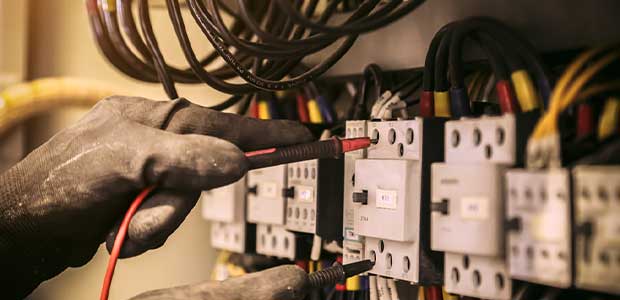
How Today’s Technology is Enabling Next-Generation Electrical Safety
Ensure worker safety with technology that launches safety into the next generation.
- By Marty Kronz, Alan Bond
- Jun 01, 2022
Electrical energy is present and poses hazards to workers in all industrial and commercial facilities. The presence of electricity often presents unique challenges due to its invisible nature. Electrical violations consistently appear within the top ten most cited violations by OSHA in the USA. However, electrical safety is often neglected until an incident occurs. Electrical incidents can be one of the most fatal and costly accidents to happen in the workplace. From heavy industry to commercial and everything in between, identifying and controlling electrical hazards is an important part of every safety program.
It is Time to Take a Fresh Look at Electrical Safety
When working on or near electrical equipment, it is important to de-energize the equipment, follow lockout tagout procedures, and verify the absence of voltage. In the past, the verification step was performed by electrically qualified workers in personal protective equipment (PPE) utilizing portable voltage test instruments. The traditional electrical LOTO process is an administrative control based on a manual process that relies on flawless human performance to be effective. Recent advances in technology make it an ideal time to take a fresh look at this process and examine opportunities to prevent exposure to the electrical hazards encountered during this testing process. Substituting a manual process that relies primarily on administrative controls like PPE and training, with an automated process that leverages engineering controls designed into a system provide an enhanced level of safety, increase the reliability of the process, and decrease the risk of exposure to electrical hazards. This is critically important, especially for a process that is performed multiple times per day.
These are the principles behind the Absence of Voltage Tester (AVT). An AVT is a permanently mounted tester that can help make the absence of voltage verification step safer, faster, and less complex. Pushing a button initiates the absence of voltage test from outside the equipment before doors and cover are removed, reducing exposure to electrical hazards. The steps performed by an AVT are automated, leading to a consistent and efficient process performing steps that typically take anywhere from 10 to 20 minutes in less than ten seconds.
In addition to reducing exposure to electrical hazards, reducing downtime and generating labor savings, AVTs help minimize human performance factors that often lead to incidents with portable test instruments. Specific Absence of Voltage Testers reliably meet or exceed UL 1436. NFPA 70E/CSA Z462 acknowledges the benefits and allows permanently mounted AVTs to be used as an alternative to handheld testers when verifying the absence of voltage.
Publisher's Note: The following appeared alongside this article as a sidebar in the OH&S Magazine June 2021 issue.
Electrical Safety Needs to be a Priority
Those who work with electricity know that safety is no joke when it comes to the responsibilities on the job. Hazards lurk around each corner and understanding how to mitigate dangerous situations is crucial to workplace safety and health. Despite the fact that it only takes seconds for an electrical incident to result in a fatality, some workplaces still haven’t prioritized electrical safety.
The Electrical Safety Foundation International (ESFI) analyzed data from the Bureau of Labor Statistics (BLS) and found that in 2020, 5.3 percent of all electrical incidents were fatal. While the percentage for fatalities in 2020 as a result of an electrical incident was down from the years prior, it isn’t a sign of increased safety in the workplace. In fact, some attribute the decline in deaths to the drop off in the amount of work that was done in 2020 due to the Covid-19 pandemic.
In addition to data on fatalities, ESFI also looked at the BLS data for non-fatal injuries resulting from electrical incidents. In 2020 there were 2,220 non-fatal electrical injuries involving days away from work. Median days away from work was typically greater than seven. The data showed that 72 percent of non-fatal electrical injuries were attributed to electrical shock, while burns accounted for 28 percent.
What can we glean from these statistics? Electrical safety needs to be a priority and steps must be taken to assess the risk from all kinds of electrical hazards.
This article originally appeared in the June 2022 issue of Occupational Health & Safety.